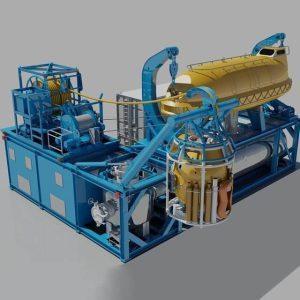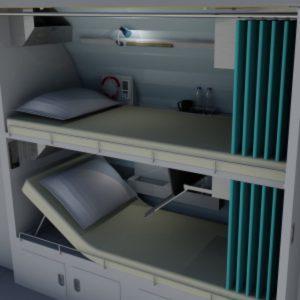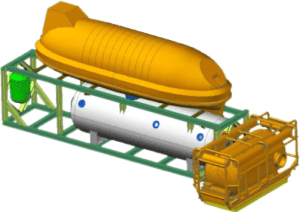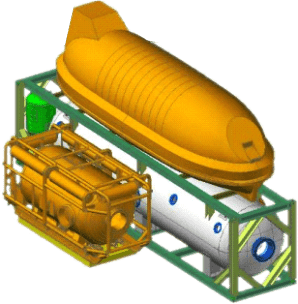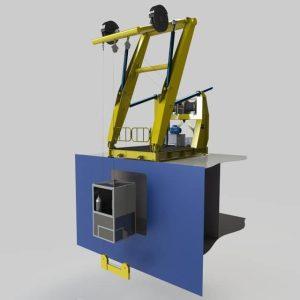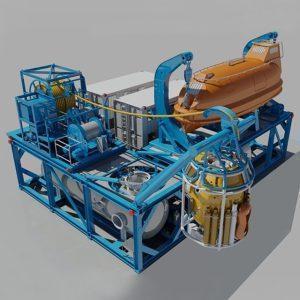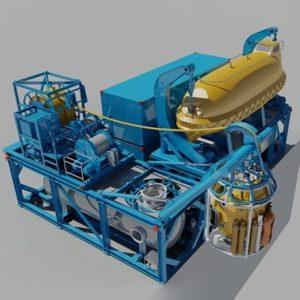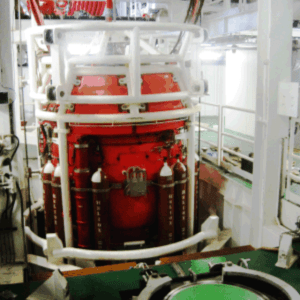Showing all 9 results
Unique Group designs and integrates saturation diving equipment for offshore vessels, dive support ships, and land-based training centres. Each system combines hyperbaric chambers, transfer-under-pressure (TUP) modules, diving bells, and life-support control units to ensure diver safety and comfort during long-duration missions.
Our equipment are engineered to meet international commercial-diving standards, providing complete control over pressure, temperature, and gas composition.
Complete Range of Saturation Diving Systems
We offer a comprehensive portfolio of DNV-certified and modular saturation diving solutions, including:
- Single-bell and twin-bell diving support vessels (DSVs)
- Hyperbaric reception facilities (HRF) for safe diver transfer and treatment
- Modular containerized SAT systems for flexible offshore deployment
- Custom-built systems tailored to project requirements and operational capacities
Our solutions are trusted by offshore energy operators, subsea contractors, and rescue teams worldwide.
Built for Safety, Compliance, and Performance
All Unique Group SAT systems are manufactured to the highest international standards (DNV, IMCA, ABS), ensuring:
- Unmatched diver safety in extreme subsea environments
- Proven reliability and durability through rigorous testing and quality control
- Operational flexibility with modular designs that can be scaled or upgraded as required
- Enhanced project efficiency, enabling divers to work in extended shifts while reducing downtime
Key Features and Technology
What makes modern saturation systems safer and more efficient?
- Integrated Communications: Real-time voice and data exchange between divers and topside teams.
- Advanced Gas-Management Systems: Automated regulation of helium-oxygen mixtures for extended depth operations.
- Environmental Control: Precision management of temperature, humidity, and CO₂ levels inside the chambers.
- System Redundancy: Dual power, life-support, and monitoring circuits for continuous safety.
- Remote Monitoring: Digital dashboards allowing operators to track chamber status and life-support parameters.
Maintenance and Reliability
How is saturation diving equipment maintained?
Preventive maintenance and calibration ensure long-term reliability:
- Perform routine pressure tests on chambers, valves, and bell components.
- Calibrate sensors and gas analysers at defined intervals.
- Conduct electrical and communication checks before each mobilisation.
- Keep service logs and certification records for audit and compliance.
Unique Group provides inspection, recertification, and spare-parts support through regional service hubs to maintain 24/7 operational readiness.
Applications of Saturation Diving Systems
Where are saturation systems used?
- Oil & Gas Operations – Pipeline installation, platform maintenance, and deep-water inspections.
- Offshore Construction – Structural welding, subsea assembly, and repair tasks.
- Decommissioning Projects – Removal and dismantling of subsea infrastructure.
- Training Centres – Controlled-environment diver training and certification.
Why Choose Unique Group?
With decades of expertise in diving and life support systems, Unique Group is a trusted partner for offshore operators who demand performance under pressure. From new builds to modular upgrades, we provide end-to-end engineering, installation, and after-sales support to keep your subsea operations running safely and efficiently.
Contact our engineering team today to discuss your requirements and explore the right saturation diving solution for your project.
Frequently Asked Questions
What type of chamber should be used for commercial diving operations?
For commercial diving operations, a saturation diving chamber system is typically used. This system allows divers to live and work at pressure for extended periods, minimizing the frequency of decompression. The chamber is equipped with advanced communication systems to maintain constant contact between the divers and surface support teams, ensuring safety and operational efficiency.
